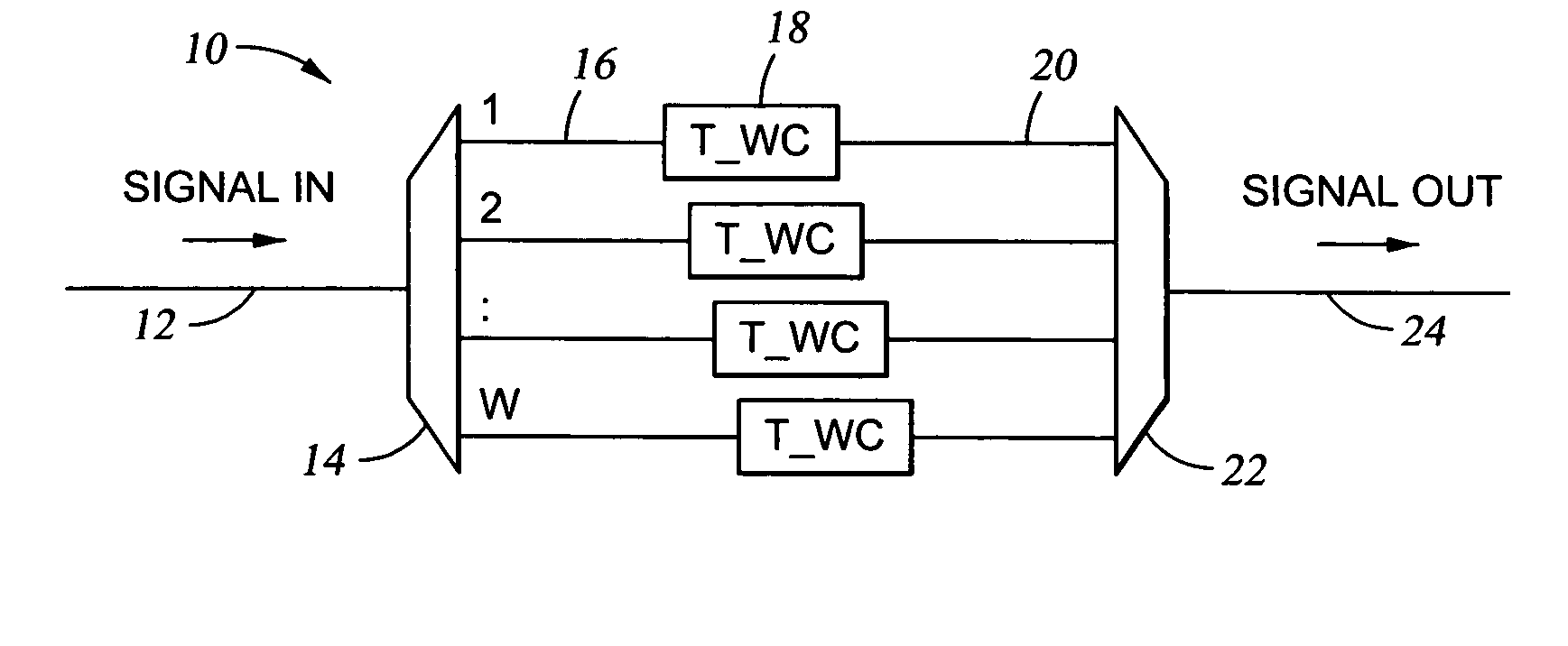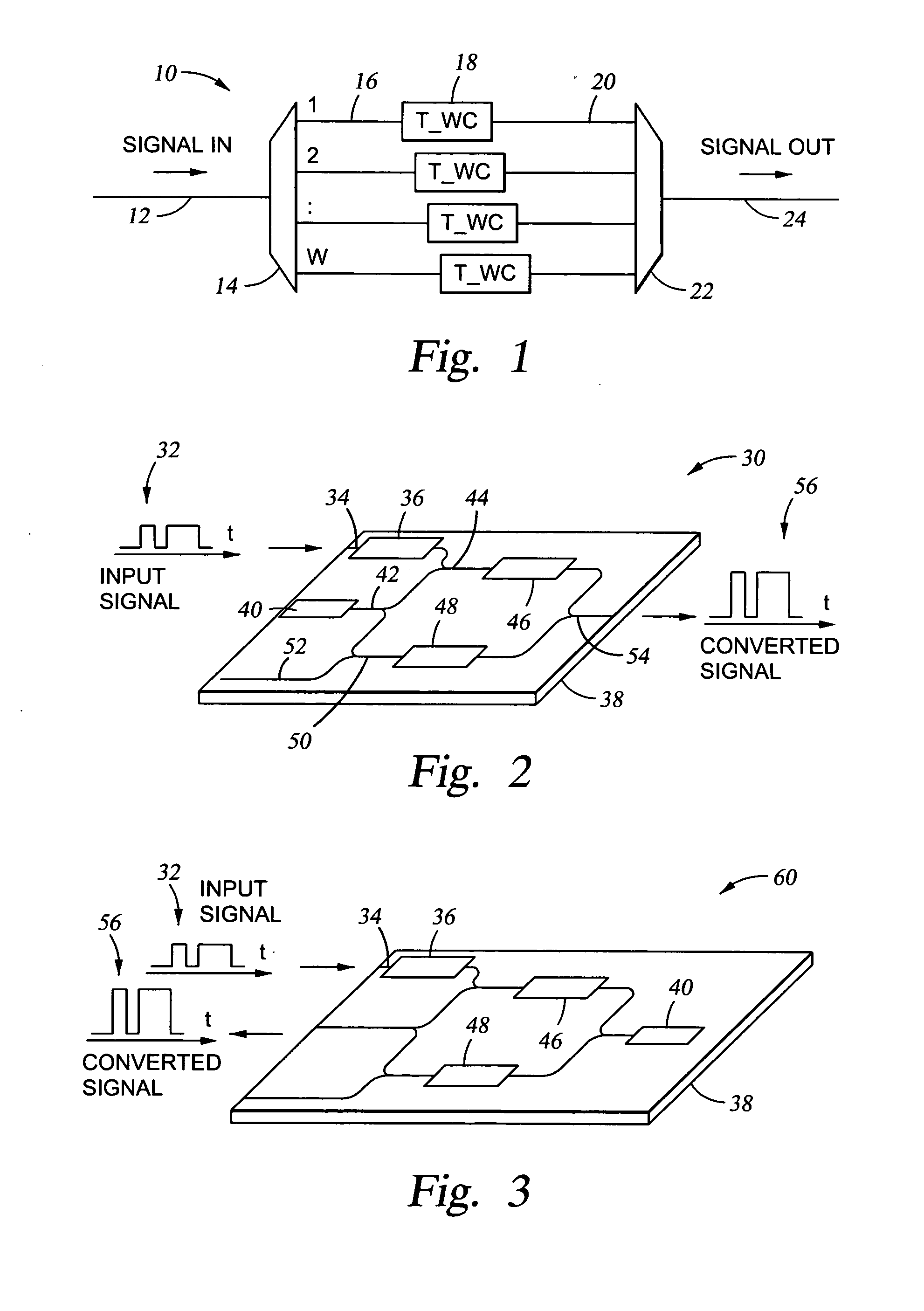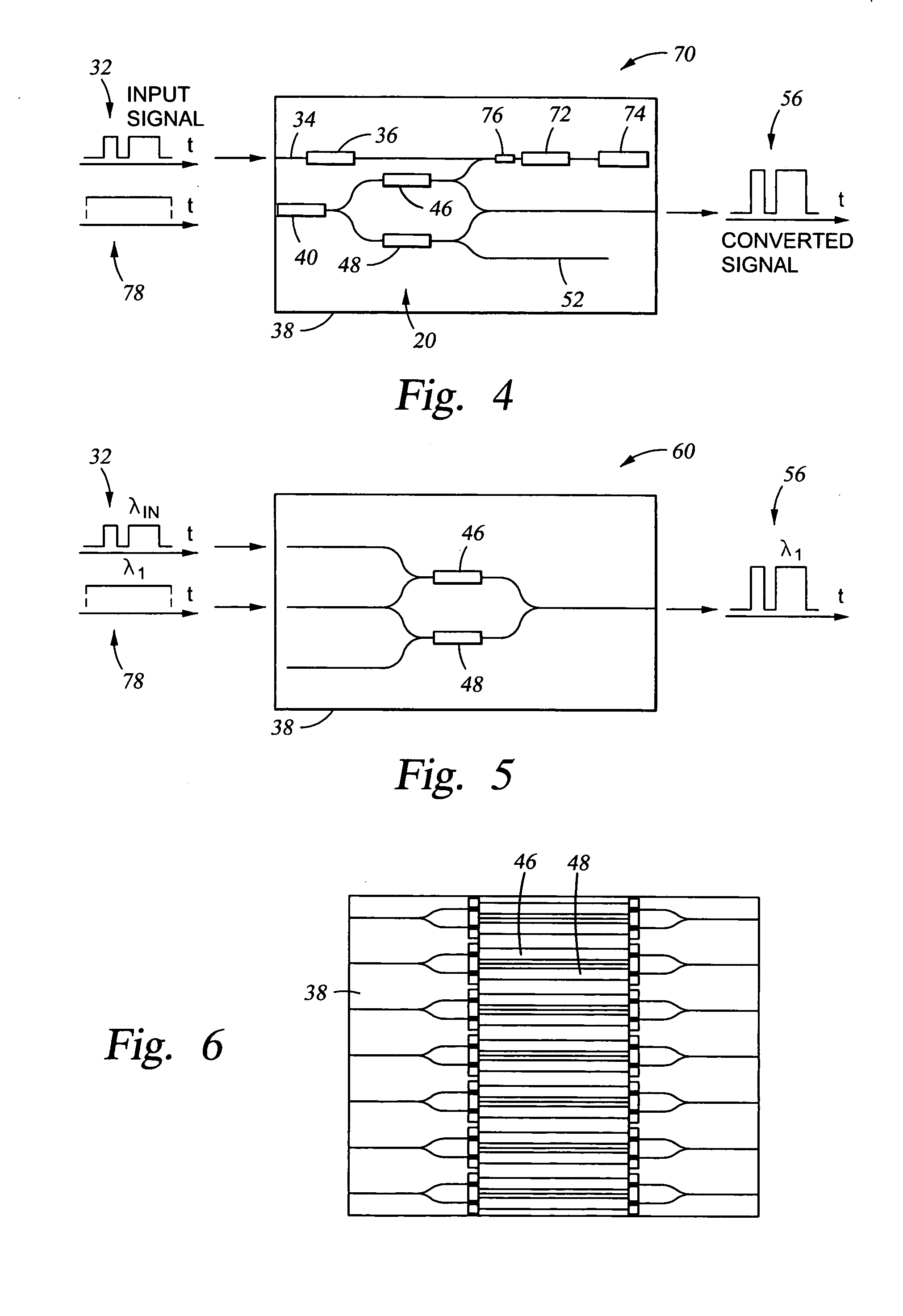Reconfigurable multi-channel all-optical regenerators
a multi-channel, all-optical technology, applied in the field of optical communication systems, can solve the problems of non-flat gain spectrum of optical amplifiers, noise, and amplification alone cannot prevent the degradation of data waveform and timing, and achieve the effect of small and even zero change in wavelengths
- Summary
- Abstract
- Description
- Claims
- Application Information
AI Technical Summary
Benefits of technology
Problems solved by technology
Method used
Image
Examples
Embodiment Construction
The preferred implementations of the optical routers of the previously cited patents to Yoo use wavelength converters both for determining the switch state of the router for a wavelength-converted packet but also to efficiently use the WDM wavelengths of the output fibers. Wavelength converters, when properly operated according to the invention can perform optical regeneration, reshaping, and retiming either in an independent regenerator or in conjunction with optical equipment such as the above mentioned optical router. Although the invention is not so limited, wavelength conversion may be accomplished with a Mach-Zehnder (MZ) interferometer.
A general schematic of one embodiment of an optical regenerator is represented in FIG. 1. An input fiber 12 carries a multi-wavelength WDM signal composed of W optical signals of different data impressed on and modulating respective optical carriers of wavelengths λ1 to λW. An optical demultiplexer 14 receives the output of the input fiber a...
PUM
 Login to View More
Login to View More Abstract
Description
Claims
Application Information
 Login to View More
Login to View More - R&D
- Intellectual Property
- Life Sciences
- Materials
- Tech Scout
- Unparalleled Data Quality
- Higher Quality Content
- 60% Fewer Hallucinations
Browse by: Latest US Patents, China's latest patents, Technical Efficacy Thesaurus, Application Domain, Technology Topic, Popular Technical Reports.
© 2025 PatSnap. All rights reserved.Legal|Privacy policy|Modern Slavery Act Transparency Statement|Sitemap|About US| Contact US: help@patsnap.com



